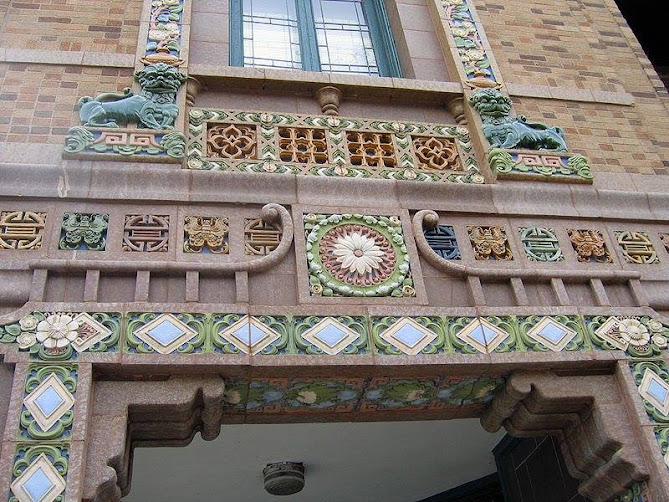Looking to escape the anti-Chinese violence that had broken out on the west coast, the first Chinese arrived in Chicago after 1869 when the First Transcontinental Railroad was completed. By the late 1800s, 25% of Chicago's approximately 600 Chinese residents settled along Clark Street between Van Buren and Harrison Avenues in Chicago's Loop.
In 1889, 16 Chinese-owned businesses were located along the two-block stretch, including eight grocery stores, two butcher shops and a restaurant.
In 1912, the Chinese living in this area began moving south to Armour Square. Some historians say this was due to increasing rent prices. Others see more complex causes: discrimination, overcrowding, a high non-Chinese crime rate, and disagreements between the two associations ("Tōngs") within the community, the Hip Sing Tōng and the On Leong Tōng.
 |
| Guey Sam Restaurant. |
The move to the new South Side Chinatown was led by the On Leong Merchants Association in 1912, which had a building constructed along Cermak Road (then 22nd Street) that could house 15 stores, 30 apartments and the Association's headquarters. While the building's design was typical of the period, it also featured Chinese accents, such as tile trim adorned with dragons.
In the 1920s, Chinese community leaders secured approximately 50 ten-year leases on properties in the newly developing Chinatown. Because of severe racial discrimination, these leases must be secured via an intermediary, H.O. Stone Company. Jim Moy, then-director of the On Leong Merchants Association, decided that a Chinese-style building should be constructed as a strong visual announcement of the Chinese community's new presence in the area.
With no Chinese-born architects in Chicago then, Chicago-born Norse architects Christian S. Michaelsen and Sigurd A. Rognstad were asked to design the new On Leong Merchants Association Building in the spring of 1926. Michaelsen and Rognstad drew their final design after studying texts on Chinese architecture. When the building opened in 1928 at the cost of a million dollars, it was the finest large Chinese-style structure in any North American Chinatown.
The On Leong Association allowed the Chinese Consolidated Benevolent Association to put its headquarters in the new building and use it as an immigrant assistance center, a school, a shrine, a meeting hall, and office space for the Association itself. It was often informally referred to as Chinatown's "city hall."
In 1928, Michaelsen and Rognstad designed two other buildings in the area—Won Kow Restaurant, Chinatown's oldest restaurant, and the Moy Shee D.K. Association Building, the former receiving a two-story addition in 1932.
The Chinatown Gate was built in 1975 at the intersection of Wentworth Avenue and Cermak Road. It is the entrance to Chinatown's oldest and most compact section. The colorful gate is known for the ornamental street lamps and Chinese dragon carvings on the sidewalks. A Chinese inscription on the gate declares, "The world is for all."
During the late 1980s, a group of Chinatown business leaders bought 32 acres of property north of Archer Avenue from the Santa Fe Railway and built Chinatown Square, a two-level mall consisting of restaurants, beauty salons and law offices flanked by 21 new townhouses.
Additional residential construction, such as the Santa Fe Gardens, a 600-unit village of townhouses, condominiums and single-family homes still under construction on formerly industrial land to the north.
Compiled by Dr. Neil Gale, Ph.D.












No comments:
Post a Comment
The Digital Research Library of Illinois History Journal™ is RATED PG-13. Please comment accordingly. Advertisements, spammers and scammers will be removed.